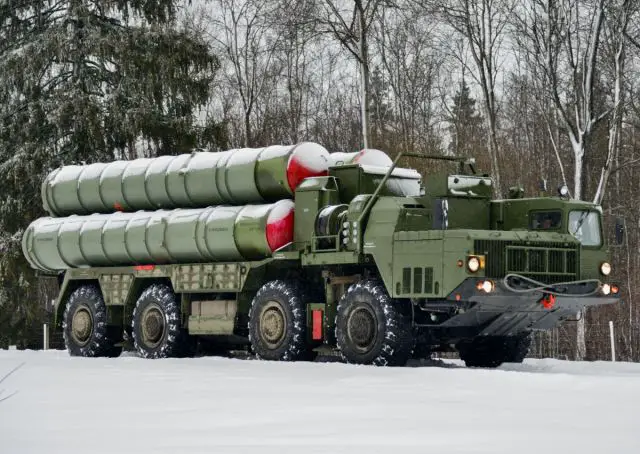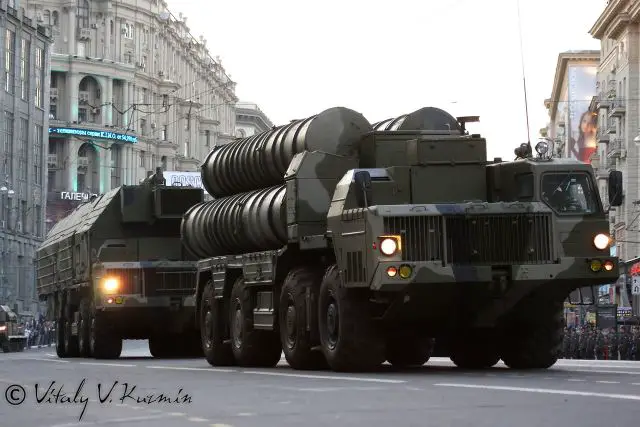New mobile air defense missile brigades in the Russian armed forces TASS 11404172
|
|
|||
|
Armies in the world - Russia
|
|||
|
|
|||
| New mobile air defense missile brigades in the Russian armed forces. | |||
|
The Russian Aerospace Force (RusAF) has started activating mobile air defense (AD) missile brigades, with the first one formed in Khakassia early this year. The new AD brigades are highly mobile large units capable of covering hundreds of kilometers in mere hours and equipped with S-300 (NATO reporting name: SA-10 Grumble) and S-400 (SA-21 Growler) surface-to-air missile (SAM) systems, Pantsir (SA-22 Greyhound) anti-air gun/missile systems and Nebo-M radars, according to the Izvestia daily.
|
|||
|
|
|||
 Mobile unit TEL (Transporter Erector Launcher) of Russian S-400 surface-to-air defense missile system (Photo Russian MoD) |
|||
|
|
|||
|
Until recently, the AD regiments have pulled alert duty mostly at their home stations without getting far away from the installations they cover. In expert opinion, the new brigades will not only boost the mobility of air defense, but also save a lot of money, because the need of defending all installations by separate AD units will be no more.
Izvestia has been told by the RusAF Main Staff that the 24th AD Brigade is the first of the kind. The newly activated large unit is garrisoned in Abakan. Another brigade like that is to be stood up in the Far North near the city of Tiksi, according to Izvestia. The mobile AD brigades will be furnished with S-300s and S-400s. Now, the Russian Defense Ministry has been acquiring the advanced SAM systems in two variants - the towed ones with their SAM launchers mounted on trailers towed by BAZ tractors and the mobile ones, which SAM launchers ride on MAZ-543M high-mobility chasses. Such AD missile systems have the endurance in excess of 600 km at a speed of 60 km/h on internal fuel. It is mobile S-300s and S-400s that will equip the newly minted mobile AD brigades. Pantsir anti-air gun/missile systems will defend the S-300s and S-400s against enemy unmanned aerial vehicles (UAV) and cruise missiles spotted by the Nebo-M high-mobility radars. The Nebo-M on the MZKT Astrolog chassis has a deployment time of only 15 min. The radar sees even small aerial targets out to 600 km. |
|||
|
|
|||
 Mobile unit TEL (Transporter Erector Launcher) of Russian S-300 surface-to-air defense missile system (Photo Copyright Vitaly Kuzmin) |
|||
|
|
|||
|
"There is a notion in air defense - point defense, i.e. the position area is set up around an installation to be covered against air attacks," former Air Defense Force Commander Lieutenant General Alexander Gorkov told Izvestia. "The older S-75 (SA-2 Guideline), S-125 (SA-3 Goa) and S-200 (SA-5 Gammon) systems were not known for their high mobility and were able to maneuver only within their positions, e.g. displace, dodge an attack or disperse to mask their order of battle. The situation changed much with the advent of the S-300 and S-400 that afforded air defense a high degree of mobility. The new brigades will be able deploy to threatened approaches not only under their own power, but also can be sealifted or airlifted."
According to Gorkov, the idea to stand up mobile AD brigades originated as far back as the 1990s when the S-300 started fielding en masse. In particular, an S-300 brigade used to be stationed near Tallinn and was later withdrawn to Ruza in the Moscow Region, where it was beefed up into the 14th Mobile AD Division capable of deploying to the vicinity of Rzhev, Pskov, Smolensk and Novgorod. The division was inactivated later, however. "Previously, the air defense coverage of cities, key industrial facilities, dams and bridges necessitated air defense missile regiments at stationary positions nearby," Vladislav Shurygin, a former commissioned officer with the Moscow AD District, told Izvestia. "In the 1980s, when the United States fielded cruise missiles and China provided itself with advanced combat aircraft, the Soviet Union began to form AD regiments and brigades throughout the country to provide AD coverage for all more or less important installations. Often, the units would be stationed in remote areas lacking social utilities and amenities." The expert stressed that the high agility of the mobile brigades, coupled with their long-range SAM systems, will enable them to defend numerous facilities. Hence, there is no longer the need for individual AD regiments or battalions to cover each and every installation, according to the Izvestia daily. |
|||


























